Abstract
OBJECTIVE: To assess the completeness of hospital discharge summaries and the efficiency of the discharge summary system in two urban teaching hospitals. DESIGN: Descriptive study, with follow-up telephone survey. SETTING: General internal medicine services at two urban tertiary care hospitals affiliated with the University of Ottawa. PATIENTS: A total of 135 patient charts, representing 10% of the patients discharged from the services between Aug. 1 and Dec. 31, 1993. Three charts were unavailable for review, and 26 were excluded because of patient death, early patient discharge (within 48 hours after admission) or lack of discharge summary; this left 106 summaries for analysis of completeness and 114 (including the charts without a summary) for analysis of efficiency. OUTCOME MEASURES: Completeness: proportion of summaries in which the following information was reported: admission diagnosis, drug allergies, physical examination, significant laboratory tests and results, discharge diagnosis, discharge medications and medical follow-up. Efficiency: time taken to generate the discharge summary and whether the patient's family physician received it. RESULTS: Of the 106 charts with a discharge summary, information was available from the dictation system database for all but one (99.1% complete). Information was missing on the admission diagnosis in 34.0% (36/106) of the summaries, the discharge diagnosis in 25.5% (27/106) and the discharge medications in 22.8% (23/101). Of the 268 significant laboratory tests and results noted in the charts 115 (42.9%) were not reported in the discharge summary. Of the 94 discharge summaries in charts with the patient's family physician listed on the facesheet, 38 (40.4%) were not received by the family physician. CONCLUSIONS: Considerable deficiencies in the completeness of the discharge summaries and the efficiency of the discharge summary system were found in the participating hospitals. Replication of this study in other settings is indicated, and strategies to improve the process should be pursued.
Full text
PDF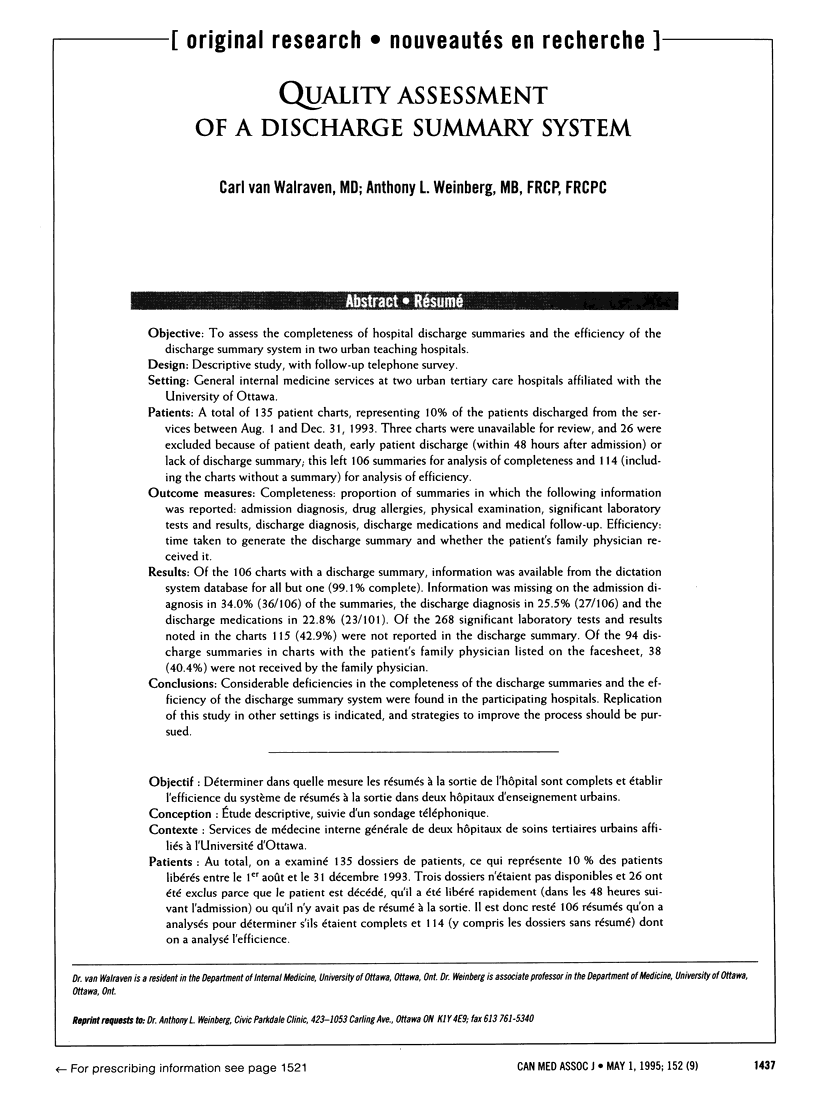
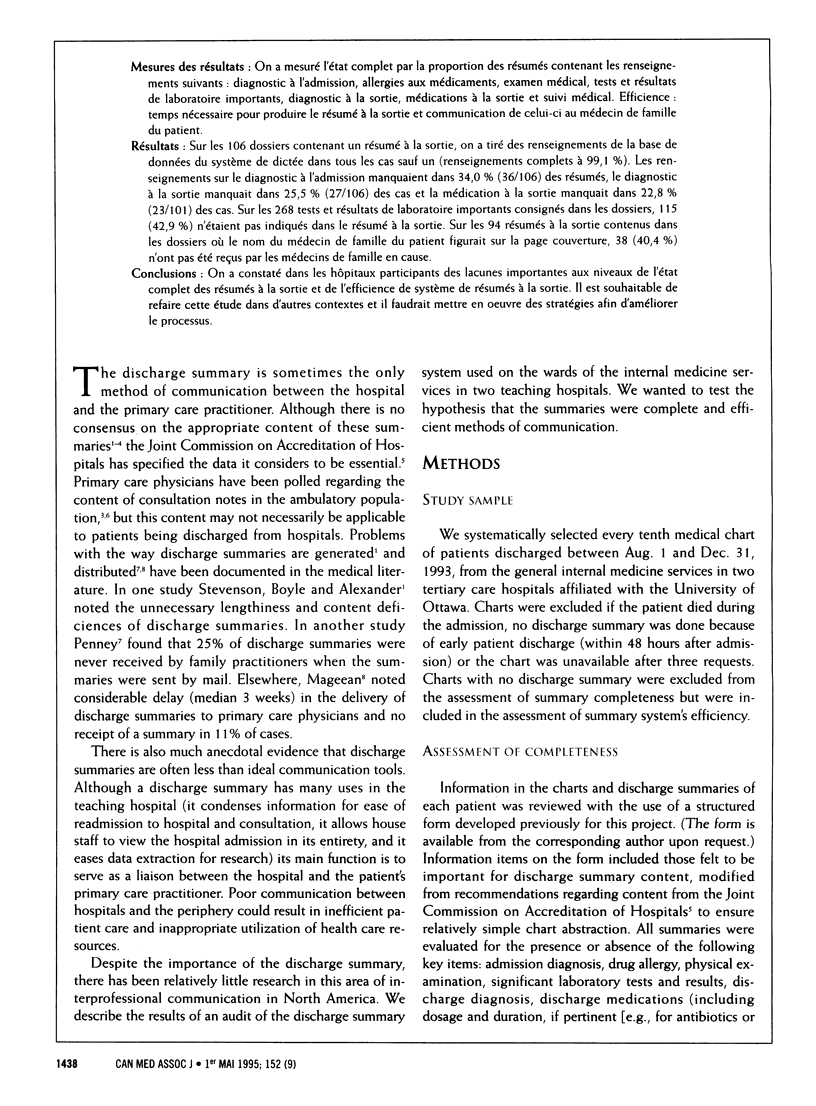
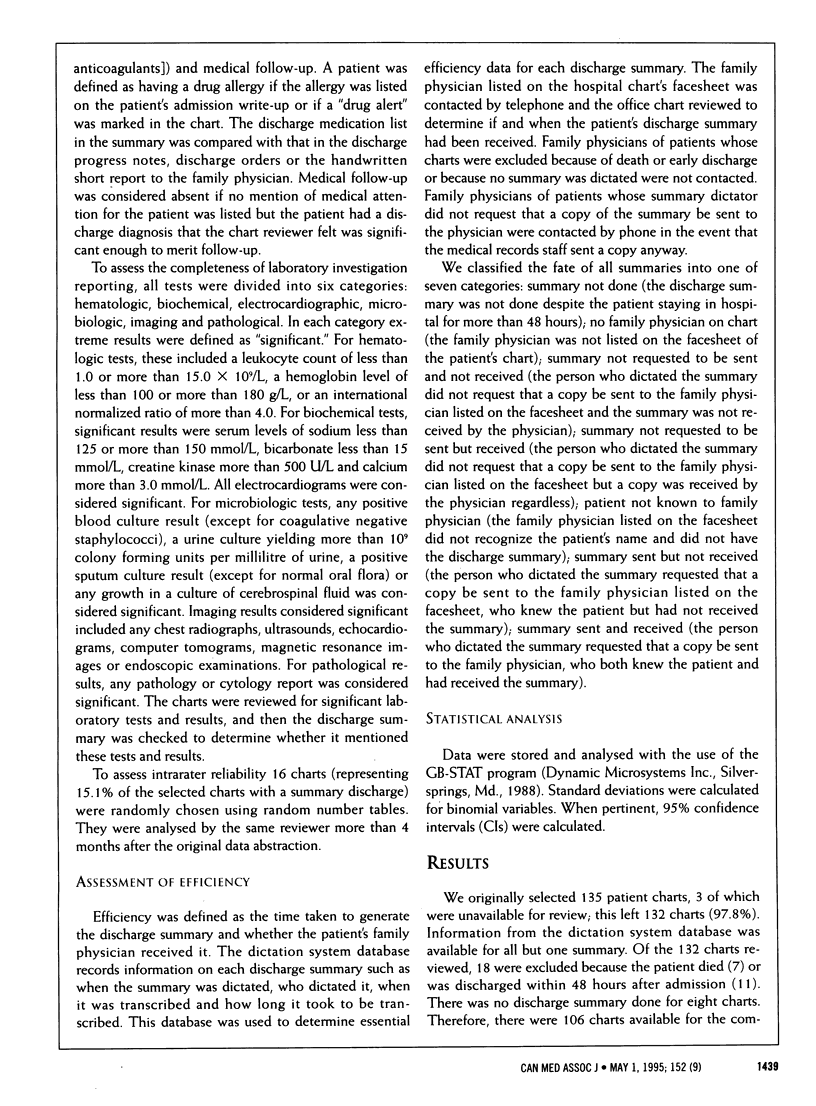
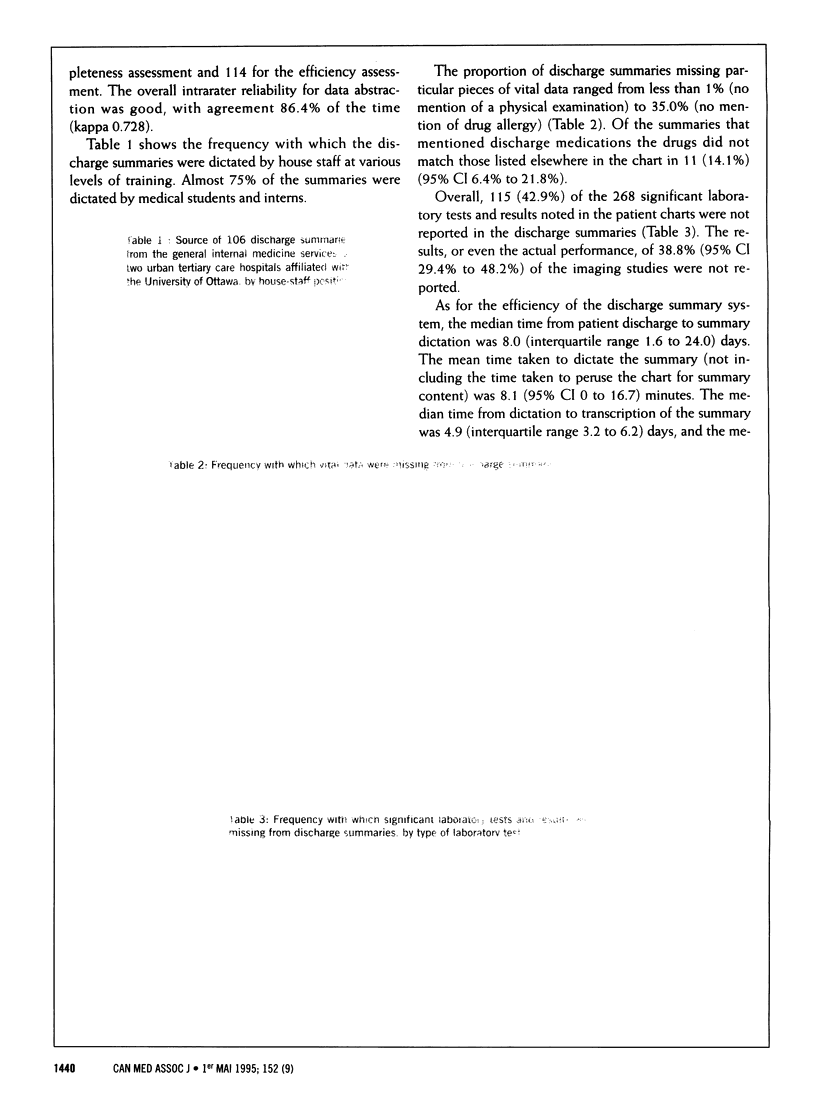
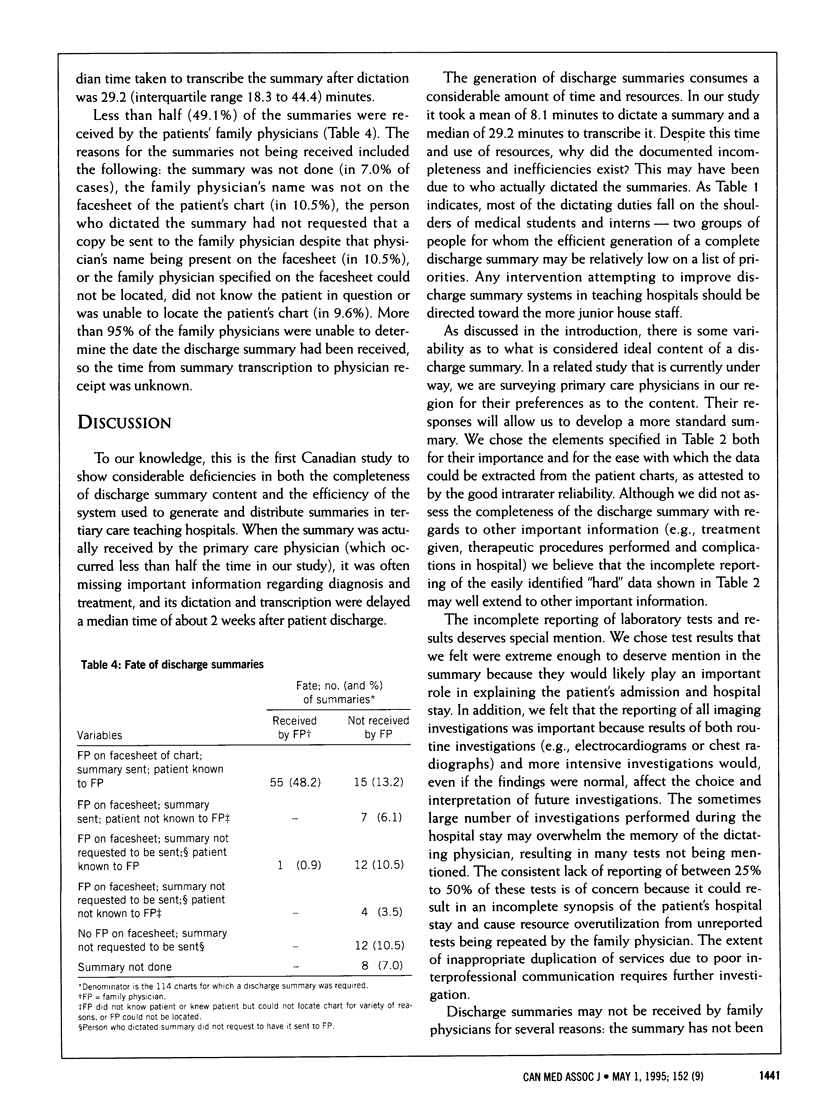
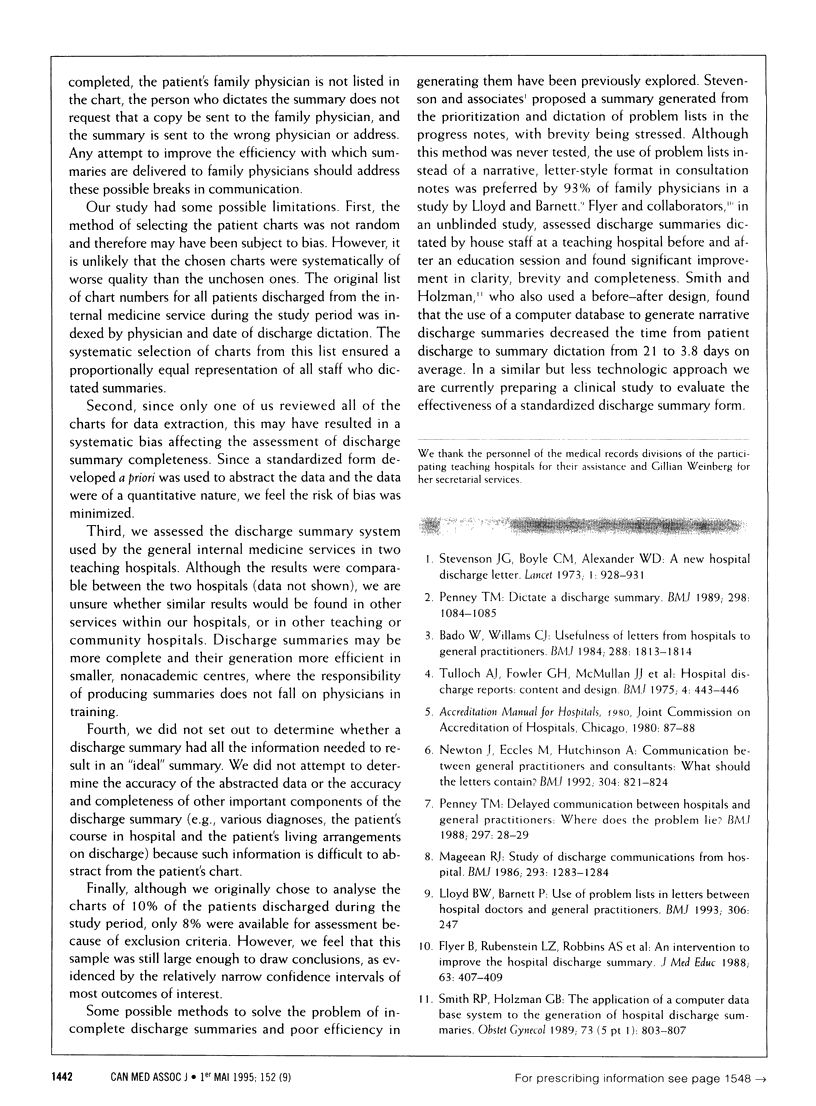
Selected References
These references are in PubMed. This may not be the complete list of references from this article.
- Bado W., Williams C. J. Usefulness of letters from hospitals to general practitioners. Br Med J (Clin Res Ed) 1984 Jun 16;288(6433):1813–1814. doi: 10.1136/bmj.288.6433.1813. [DOI] [PMC free article] [PubMed] [Google Scholar]
- Flyer B., Rubenstein L. Z., Robbins A. S., Wieland G. D., Henry D., Cugalj N. An intervention to improve the hospital discharge summary. J Med Educ. 1988 May;63(5):407–409. doi: 10.1097/00001888-198805000-00010. [DOI] [PubMed] [Google Scholar]
- Lloyd B. W., Barnett P. Use of problem lists in letters between hospital doctors and general practitioners. BMJ. 1993 Jan 23;306(6872):247–247. doi: 10.1136/bmj.306.6872.247. [DOI] [PMC free article] [PubMed] [Google Scholar]
- Mageean R. J. Study of "discharge communications" from hospital. Br Med J (Clin Res Ed) 1986 Nov 15;293(6557):1283–1284. doi: 10.1136/bmj.293.6557.1283. [DOI] [PMC free article] [PubMed] [Google Scholar]
- Newton J., Eccles M., Hutchinson A. Communication between general practitioners and consultants: what should their letters contain? BMJ. 1992 Mar 28;304(6830):821–824. doi: 10.1136/bmj.304.6830.821. [DOI] [PMC free article] [PubMed] [Google Scholar]
- Penney T. M. Delayed communication between hospitals and general practitioners: where does the problem lie? BMJ. 1988 Jul 2;297(6640):28–29. doi: 10.1136/bmj.297.6640.28-a. [DOI] [PMC free article] [PubMed] [Google Scholar]
- Penney T. M. Dictate a discharge summary. BMJ. 1989 Apr 22;298(6680):1084–1085. doi: 10.1136/bmj.298.6680.1084. [DOI] [PMC free article] [PubMed] [Google Scholar]
- Smith R. P., Holzman G. B. The application of a computer data base system to the generation of hospital discharge summaries. Obstet Gynecol. 1989 May;73(5 Pt 1):803–807. [PubMed] [Google Scholar]
- Stevenson J. G., Boyle C. M., Alexander W. D. A new hospital discharge letter. Lancet. 1973 Apr 28;1(7809):928–931. doi: 10.1016/s0140-6736(73)91378-0. [DOI] [PubMed] [Google Scholar]
- Tulloch A. J., Fowler G. H., McMullan J. J., Spence J. M. Hospital discharge reports: content and design. Br Med J. 1975 Nov 22;4(5994):443–446. doi: 10.1136/bmj.4.5994.443. [DOI] [PMC free article] [PubMed] [Google Scholar]


